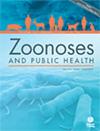Rickettsia spp. and Anaplasmataceae in Ticks From Domestic Animals in Northern Colombia
Abstract
Introduction
Tick-borne diseases have a significant impact on public and animal health and represent a considerable financial burden on livestock farming. However, in many regions of Latin America, comprehensive epidemiological data, including species identification, geographical distribution and molecular profiling of ticks and their associated pathogens, remain scarce. The aims of the present study were: 1) to establish the distribution of tick species collected from domestic animals and 2) to molecularly characterise the rickettsial bacteria present in ticks from the department of Atlántico, area Caribe, Colombia.
Methods
Between January 2021 and March 2022, ticks were collected from 216 cattle and 72 sympatric domestic animals (38 dogs, 31 equids and 3 goats) on 28 farms. Specimens were identified and grouped into 297 pools. Molecular detection and characterisation of the pathogens were carried out by targeting the partial gltA, ompA, ompB and 16S rRNA genes of Rickettsia and the partial 23S rRNA and 16S rRNA genes of Anaplasmataceae.
Results
A total of 1541 ticks were collected, and four species belonging to the genera Rhipicephalus, Dermacentor and Amblyomma were identified. A total of 137 out of 288 animals (47.6%) were infested with a mean infection rate of 9.7 ± SD 6.8 ticks per animal. Rickettsia spp. and Anaplasmataceae DNA were detected in 2.7% (MIR: 0.5%) and 15.5% (MIR: 0.3%) of the tick pools, respectively. The obtained sequences showed high nucleotide identity (99%–100%) with sequences of Candidatus Rickettsia colombiensis, Anaplasma marginale, Anaplasma platys, Ehrlichia canis and Ehrlichia minasensis.
Conclusion
Our data represent the first description of Dermacentor nitens and Amblyomma patinoi in the Atlantic region of the Colombian Caribbean. Considering the risk that the tick and rickettsial species represent for public and animal health, monitoring and control programmes are necessary to prevent the spread of tick-borne pathogenic bacteria to humans.


 求助内容:
求助内容: 应助结果提醒方式:
应助结果提醒方式:


